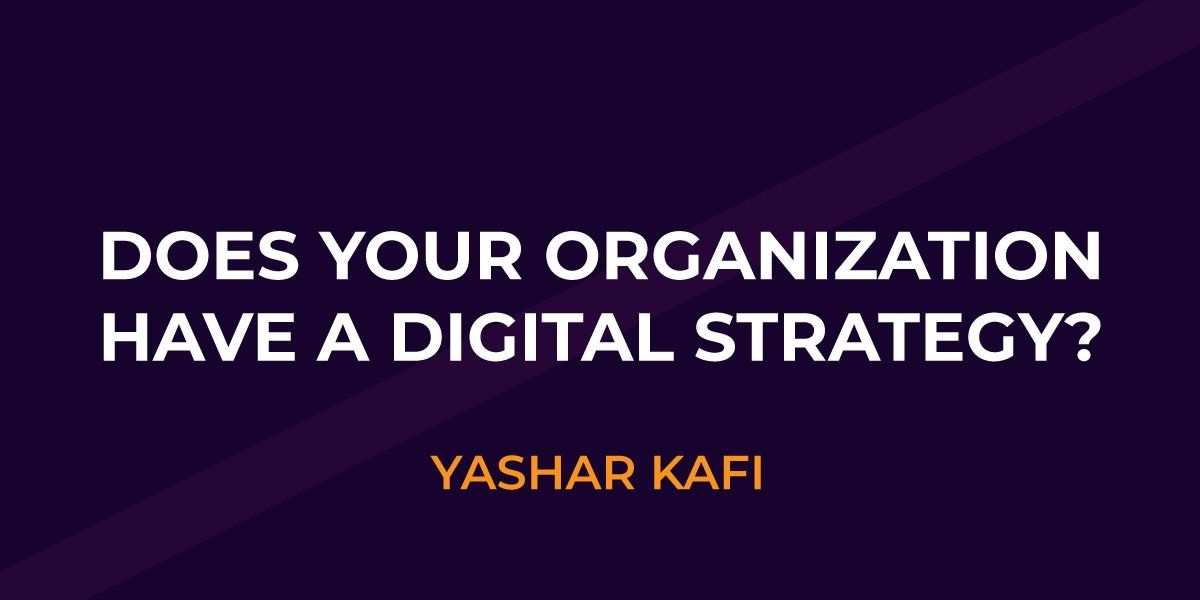Does Your Organization Have a Digital Strategy?
How long has your organization been pondering how to traverse their organization’s digital future? The concept of a ‘digital can conjure up several different thoughts, depending on the role of the individual contemplating it. If you talk to somebody who works in marketing, they are likely to associate a digital strategy with social media and web-based marketing methods. Someone in IT would imagine the cloud, and someone in business operations would likely see it as data analytics. If your organization finds itself in disarray with the technological evolution of modern business and you think you’re falling behind the competition, you’re not alone. Most organizations struggle in the face of digital transformation partially because almost every person has a different opinion about what a digital strategy actually is.
What Is A Digital Strategy?
A digital strategy is a well thought out plan that helps a company maximize the benefits of its technology-focused initiatives and data assets at their disposal.
When it comes to making a plan, organizations traditionally tended to focus on the long-term. They would often rely on a collection of road maps and budget forecasts spanning years into the future, representing projections and a potential trajectory for the business. Digital strategies are the opposite. They are month-to-month, short term road maps that are linked to relevant business objectives and actionable items that they can be measured against.
What Should The Digital Strategy Focus On?
A digital strategy should have one primary focus: to disrupt the parts of an organization’s business infrastructure that are vulnerable to technology. In other words, parts of the business that can be bettered in one way or another, perhaps for the current processes, or improving business performance and economics through a digital reboot. One of the major challenges that organizations face when figuring out a digital strategy is deciding which responsibilities can be dealt with in-house and which can be outsourced.
Digital Strategy and Digital Transformation
One of the most common scenarios for digital transformation is this: somebody, somewhere in the organization, has heard of or seen a technology that is touted as ‘digital transformation.’ They see the benefits of the technology and take the concept to the C-Suite, or a relevant executive within the company. He or she takes a look at the wider picture and says, “We can save money or optimize, and create efficiencies through this.” They aren’t wrong. The problem is, no one has actually taken a look at digital transformation from a business and operations perspective. Nobody has questioned whether they can realistically take on the transition, and they often haven’t done their due diligence to ensure that they know exactly what digital transformation is and entails. Most organizations lack the right person to lead and drive the necessary change. They don’t have the expertise in-house to establish which technology or set of technologies can best enable and enhance their business the most. In other words, they lack a digital strategy.
Our consultants have supported many organizations over the years, assisting their executives as they establish exactly what they can and cannot do within the limitations of their infrastructure, and giving them guidance on how to figure out a digital strategy to ensure that their digital transformation is a success. If you or your organization needs a hand, get in touch with our experts today. We will help you AMPlify your digital strategy.




